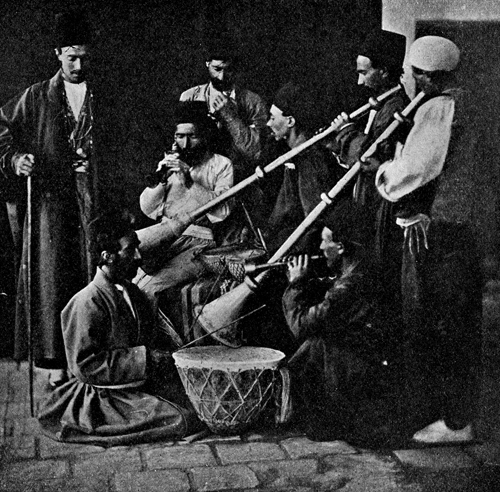
Every day at dawn and dusk (and whenever a sick pilgrim gets healed), kettle-drums are beaten and long metal trumpets are blown in Mashhad. The 1910 photo here shows the naqqāra-ḵāna: the name used for the ensemble of musicians as well as the place where the performance takes place. Click here (and then on ‘live sound’ to hear the trumpets. The official shrine recording takes ages to load up, but if you want to hear that, then click here (then on the sound icon, and prepare to wait).
The trumpets and drums have been played in Mashhad since at least 1455 (860 AH), when Baisonqor, Shahrukh’s son and Timur’s grandson, came to Mashhad seeking a cure for an illness that the doctors had been unable to treat. Of course, he was miraculously healed.
Shah Abbas, when he rebuilt the Old Courtyard (now Revolution Courtyard), constructed a balcony specially for musicians – the eastern balcony. It’s 18.2 m by 7.8 m – and 26 meters high. It was repaired in 1861 (1276 AH). Click here to see a picture.

Centuries before then, though, long metal trumpets were used in battle and for signalling. I have an idea that the trumpets may have been mentioned by Herodotus (corrections welcome). They were certainly included in the Shahnameh.
There are even some portions of ancient trumpets preserved at the Persepolis Museum. Foreign delegations were announced when they arrived at Persepolis by trumpeters standing at the top of the staircase in front of the Gate of All Nations. Persians and Medes received the delegations, and led them to the king in the Hundred Column Palace.
If you want to see more trumpets in action – in Tajikistan: then click here for a video